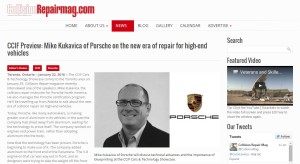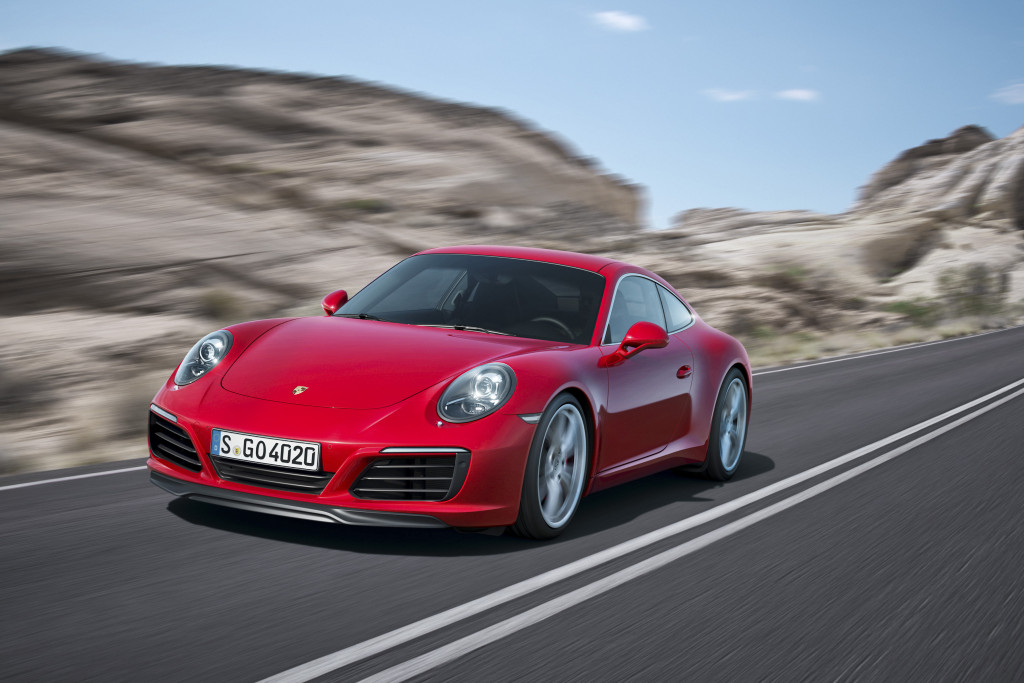
Collision Repair Magazine previews CCIF speakers’ auto body insights; U.S., Canada shops should take a look
By onBusiness Practices | Education | Repair Operations | Technology
A series of previews in Collision Repair Magazine ahead of the Canadian Collision Industry Forum — the “biggest collision repair event in Canadian history” — offer some valuable analysis on towing, OEM “steering,” blueprinting and aluminum.
For Canadian collision repairers attending the event, the pieces should provide good introductions to and preparation for the various speakers. For those who can’t go — it’s already sold out — or live here in the U.S., the articles should offer a bit of food for thought.
Here’s some of the highlights from the magazine’s coverage and links to the full articles:
Pete Karageorgos, IBC
On new Ontario towing regulations:
- “One comment that was heard from the police is that it’s difficult for the front line constable who’s perhaps addressing a crash. For example, what about an accident on a municipal road that is the border between two different municipalities that have different regulations? That’s really confusing. It’s confusing for consumers. It’s confusing for those who deal with it day in and out, the officers. If we can create some openness and a level playing field, that’s going to help unravel this confusion.”
- “The changes happening now are still early stages. There are other questions and points that have to be addressed in terms of inspection of tow trucks and operator training on two vehicles. … Ithink it’s important that everyone understand the industry has to ensure that the guy at the scene is properly trained. This is still a work in progress.”
Read the full Jan. 10 Collision Repair Magazine article here.
Mike Anderson, Collision Advice
On OEM connected cars and scans/calibratioon:
- “Virtual steering is coming sooner than we think. The vehicle will notify the OE about an accident. They’re going to be directing the car to a certified shop. If you’re on the list, you’ll get the work, if not, you don’t.”
- “Shops need to understand that it’s more important to research OE procedures to fix cars properly. Research the OE standard. The new Toyota Tundra has 14 pages that you have to go through to complete a repair. You don’t know what you don’t know. You have to research this stuff. You have to scan every vehicle, pre- and post-repair.”
Read the full Jan. 14 Collision Repair Magazine article here.
Jim Dickson, Rio Tinto
- “Over the next five to seven years, we think this is going to be significant. We’re confident we are going to see a larger shift to aluminum in the use of automotive bodies.”
- “In the future autos are going to be multi-material. So we have to ask, how does aluminum react with steel? What happens when you bond these materials? These are the issues that are going to be affecting the repair industry in the years to come. There are certain standards with respect to aluminum that you have to be aware of. But again, it’s just different, not difficult.”
Read the full Jan. 20 Collision Repair Magazine article here.
Mike Kukavica, Porsche
On aluminum, blueprinting, OEM procedures:
- “Other cars have had chunks of aluminum. But this car (new Porsche 911) is a step ahead.”
- “The car has to have a thorough inspection before you begin to work, including measuring. This new 911 cannot be pulled, for a myriad of reasons. It has to be measured beforehand. This is where electronic measuring is wonderful. … What I tell my guys is that this is a metal car, but it doesn’t work like one. It has a lot more in common with a carbon fibre car. No one would think of putting a carbon fibre car on a rack and pulling it. You’re going to identify damage, cut it out, and replace. And that’s how we have to think of these cars.”
- “The manual might not state the reason for why these steps need to be taken, but there are reasons for every single one. Collision repair experts and insurers do not have the ability to test whether the repair is going to work in the field. Generally, someone can make the case that they can get the part on the car, but we don’t know if it’s going to last.”
Read the full Jan. 22 Collision Repair Magazine article here.
More information:
“CCIF Preview: IBC’s Pete Karageorgos on towing, storage and new regulations”
Collision Repair Magazine, Jan. 10, 2016
“CCIF Preview: Mike Anderson says ‘Virtual Steering’ is coming soon”‘
Collision Repair Magazine, Jan. 14, 2016
“CCIF Preview: Jim Dickson of Rio Tinto talks aluminum”
Collision Repair Magazine, Jan. 20, 2016
“CCIF Preview: Mike Kukavica of Porsche on the new era of repair for high-end vehicles”
Collision Repair Magazine, Jan. 22, 2016
Images:
A series of previews in Collision Repair Magazine ahead of the Canadian Collision Industry Forum — the “biggest collision repair event in Canadian history” — offer some valuable analysis on towing, OEM “steering,” blueprinting and aluminum. (Screenshot of www.CollisionRepairMag.com)
The 2017 Porsche 911 Carrera is shown. (Provided by Porsche)

